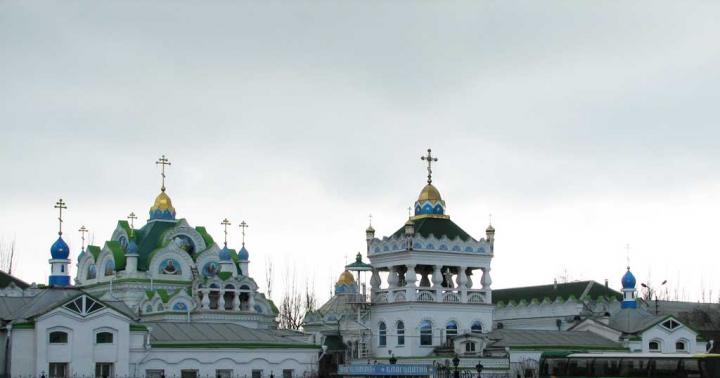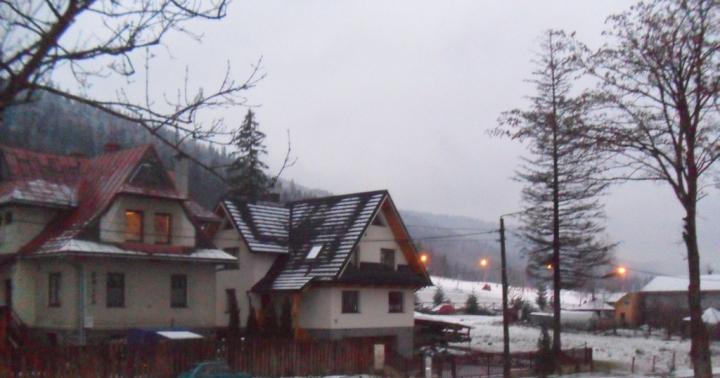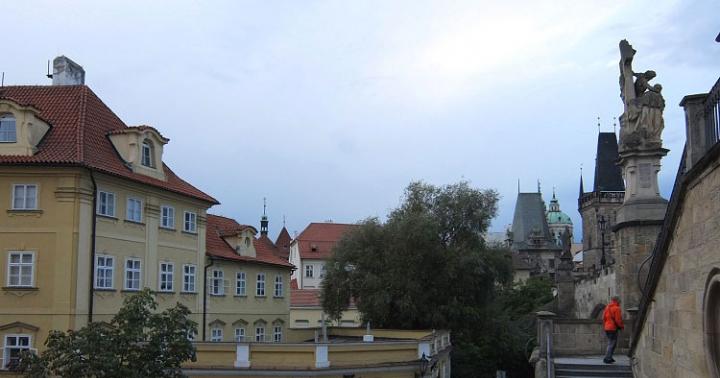Why are airplanes built?
When the first airline pilots managed to take off, it was perceived as a real revolution in science and technology. Then aircraft began to be used for various purposes - from passenger and cargo transportation to combat operations during the war. Gradually, models were developed that flew higher and faster. Today, some aircraft are used to provide assistance to people in trouble and even to extinguish forest fires.
Soon after the first flights of motorized airplanes, people began to use aviation for military purposes. In the First World War (1914 - 1918) they were used in reconnaissance, which made it possible to effectively monitor the enemy. Then the fighters began to fight each other in the air, and the bombers attacked the enemy troops. A large number of aircraft were used in World War II (1939 - 1945). The invention of the jet engine made them even more dangerous. Today the Air Force different countries constantly improving aircraft technology and flight methods.
Compare ancient and modern airplanes
Vintage aircraft are already very different from modern ones. In 1950, thanks to the use of the first jet engines planes began to reach high speeds. Now there are aircraft, for example, the Russian Tu-144, the European Concorde, which were able to exceed the speed of sound. Modern airplanes are different in that they fly higher and faster than ancient ones, cover long distances, and can also transport large numbers of people and cargo.
TU-144 is the first in history passenger airliner, broke the sound barrier. This happened on June 5, 1969.
The largest scheduled airliner In the world, the Boeing 747 reaches a length of 70 m, its wingspan is 65 m. It can carry 566 passengers and flies 13,000 km without additional refueling. During long flights, passengers are offered hot meals prepared on board the aircraft.
Seaplanes equipped with wheels for landing on land and floats for splashdown. It is equipped with tanks for transporting water and foam necessary when extinguishing a fire. This aircraft is also used to rescue people at sea. It can also spray chemicals that help clean up oil spills.
Flying doctors. Some doctors use the plane to visit patients living in very remote areas of the country.
It’s hard to imagine our life without airplanes; they perform many important tasks that people need.
I recently acquired several photographs of airplanes.
There is no output data, it is unknown when the pictures were taken.
But I know the names of two planes, but the one in the title photo does not.
Can anyone tell me what kind of plane is in the photo?
Quote from the aviation reference book V.B. Shavrova:
The aircraft was intended for military use, so it was planned to install armor and weapons.
In addition, the structure was easily disassembled within 5 minutes; when disassembled, the Bi-Kok was placed in a transport container measuring 3.7 x 1.8 x 1.7 m.
The main reason for the appearance of the “collapsible” aircraft was its construction in the designer’s personal apartment, located on the 6th floor of a residential building.
"B-Kok" was successfully tested from August 15 to September 5, 1914.
With a full load of 256 kg, equal to the weight of an empty aircraft, pilot M.L. Grigorashvili managed to reach a maximum speed of about 100 km/h.
And this is how the short biography of this curious machine ended:
Two more photos under the cut.
The plane "Russian Knight" (S-21 "Big Russian-Baltic") - the world's first four-engine aircraft, gave rise to heavy aviation.
Created by I. I. Sikorsky as an experimental aircraft for strategic reconnaissance.
Moreover, the photo shows an early twin-engine modification.

The aircraft "Ilya Muromets" (S-22 "Ilya Muromets") is the general name of several series of four-engine all-wood biplanes produced in Russia at the Russian-Baltic Carriage Plant during 1914-1919.
The plane set a number of records for carrying capacity, number of passengers, time and maximum flight altitude.
It is the world's first serial multi-engine aircraft.
The aircraft was developed by the aviation department of the Russian-Baltic Carriage Plant in St. Petersburg under the leadership of I. I. Sikorsky.
“Ilya Muromets” appeared as a result of further development of the “Russian Knight” design, during which it was almost completely redesigned; only the general layout of the aircraft and its wing box with four engines installed in a row on the lower wing were left without significant changes, while the fuselage was fundamentally new.
As a result, with the same four 100 hp Argus engines. With. the new aircraft had twice the load weight and maximum flight altitude.
As explained in the comments, this is the III ship (factory No. 151, serial No. B-10), of the same type as Gorshkov’s Kievsky (formerly the seventh).
These were the first two devices built on the basis of the first unsuccessful experience in the combat use of B-series ships.
In general, they saved Sikorsky's reputation.
Thanks to the efforts of Gorshkov, Bashko (commanders of Kievsky), Brodovich and Ozersky (commanders of the Third), this couple carried out the lion's share of the work of the EVC in 1915. Externally, these ships are easily recognized by their “pike nose”.
They were called “sharp-nosed”, unlike other cars.
The third ship, unlike the Kievsky, had more developed glazing in the front part of the cabin.
Original taken from avp23649 in Vintage airplanes
I recently acquired several photographs of airplanes.
There is no output data, it is unknown when the pictures were taken.
But I know the names of two planes, but the one in the title photo does not.
Can anyone tell me what kind of plane is in the photo? 
Two more photos under the cut.
The plane "Russian Knight" (S-21 "Big Russian-Baltic") - the world's first four-engine aircraft, gave rise to heavy aviation.
Created by I. I. Sikorsky as an experimental aircraft for strategic reconnaissance.
Moreover, the photo shows an early twin-engine modification. 
The aircraft "Ilya Muromets" (S-22 "Ilya Muromets") is the general name of several series of four-engine all-wood biplanes produced in Russia at the Russian-Baltic Carriage Plant during 1914-1919.
The plane set a number of records for carrying capacity, number of passengers, time and maximum flight altitude.
It is the world's first serial multi-engine aircraft.
The aircraft was developed by the aviation department of the Russian-Baltic Carriage Plant in St. Petersburg under the leadership of I. I. Sikorsky.
“Ilya Muromets” appeared as a result of further development of the “Russian Knight” design, during which it was almost completely redesigned; only the general layout of the aircraft and its wing box with four engines installed in a row on the lower wing were left without significant changes, while the fuselage was fundamentally new.
As a result, with the same four 100 hp Argus engines. With. the new aircraft had twice the load weight and maximum flight altitude.
As explained in the comments, this is the III ship (factory No. 151, serial No. B-10), of the same type as Gorshkov’s Kievsky (formerly the seventh).
These were the first two devices built on the basis of the first unsuccessful experience in the combat use of B-series ships.
In general, they saved Sikorsky's reputation.
Thanks to the efforts of Gorshkov, Bashko (commanders of Kievsky), Brodovich and Ozersky (commanders of the Third), this couple carried out the lion's share of the work of the EVC in 1915. Externally, these ships are easily recognized by their “pike nose”.
They were called “sharp-nosed”, unlike other cars.
The third ship, unlike the Kievsky, had more developed glazing in the front part of the cabin.
Many claim that this is an image of an attacking helicopter and what resembles fuel containers located one below the other. Also on the bas-relief you can clearly see the hemisphere of an eagle standing on it and looking at the “armored tank”. Here two more types of aircraft were found, and judging by their direction, the “enemy” is precisely the “tank”. One retired officer even identified the helicopter as a specific US-made model and wrote that the entire set of hieroglyphs matched the picture of the military operation Desert Storm. This was the only war in which such a helicopter and tanks participated simultaneously.
It is difficult to argue after this that the Egyptians did not see the future by carving hieroglyphs thousands of years before helicopters were invented. Many people around the world have studied this photo. And we will conduct an independent investigation.

So, the details. Next to the helicopter, enthusiasts look out for a squat tank with a long gun. Below it is either a cargo plane or a submarine. Particularly impressionable people see a radar installation with an antenna dish in the right corner. A highly developed imagination allows some to assume that next to the helicopter is not a tank at all, but a “flying saucer”.  The fourth object is interpreted both as an airship, and as a typical UFO, and as an airplane with a large fuselage:
The fourth object is interpreted both as an airship, and as a typical UFO, and as an airplane with a large fuselage: 
 The technology, which clearly does not correspond to the time, does not even give rise to, but rather reinforces, the hypothesis that the ancient Egyptians inherited something valuable from some advanced civilization that existed before. For example, from the Atlanteans. Or from aliens from outer space, in connection with which the pharaohs have always been suspected.
The technology, which clearly does not correspond to the time, does not even give rise to, but rather reinforces, the hypothesis that the ancient Egyptians inherited something valuable from some advanced civilization that existed before. For example, from the Atlanteans. Or from aliens from outer space, in connection with which the pharaohs have always been suspected. 
 The mystery of the “ancient Egyptian helicopter” was solved by archaeologists from the Munich Institute of Egyptology in 1992. After studying the picture, scientists came to the conclusion that it was completed by time. Cracks, traces of plaster, chips added details - for example, the main rotor of the “helicopter”, the cannon of the “tank”, the tail of the “plane”. And the “technology” acquired modern features. In fact, all these “constructions” were previously just hieroglyphs.
The mystery of the “ancient Egyptian helicopter” was solved by archaeologists from the Munich Institute of Egyptology in 1992. After studying the picture, scientists came to the conclusion that it was completed by time. Cracks, traces of plaster, chips added details - for example, the main rotor of the “helicopter”, the cannon of the “tank”, the tail of the “plane”. And the “technology” acquired modern features. In fact, all these “constructions” were previously just hieroglyphs. 
In addition to the time, it was also influenced by the fact that the text is essentially a “palimpsest”, that is, in different time Various hieroglyphs were carved on one stone. The text of Pharaoh Seti was “corrected” by his successor Ramses II. The title "who repelled the nine enemies of Egypt (nine bows)" was replaced by the title of Ramses "who defends Egypt and conquers foreign countries." Such cases of usurpation (appropriation) of the monuments of their predecessors are not isolated. 

 Over time, the coloring of the hieroglyphs faded, part of the plaster covering the old inscription fell off, and this strange combination turned out.
Over time, the coloring of the hieroglyphs faded, part of the plaster covering the old inscription fell off, and this strange combination turned out.
It is difficult to escape the impression that these signs are similar to modern technology. This is how our perception works: in the incomprehensible, we tend to recognize first of all what is familiar to us.


